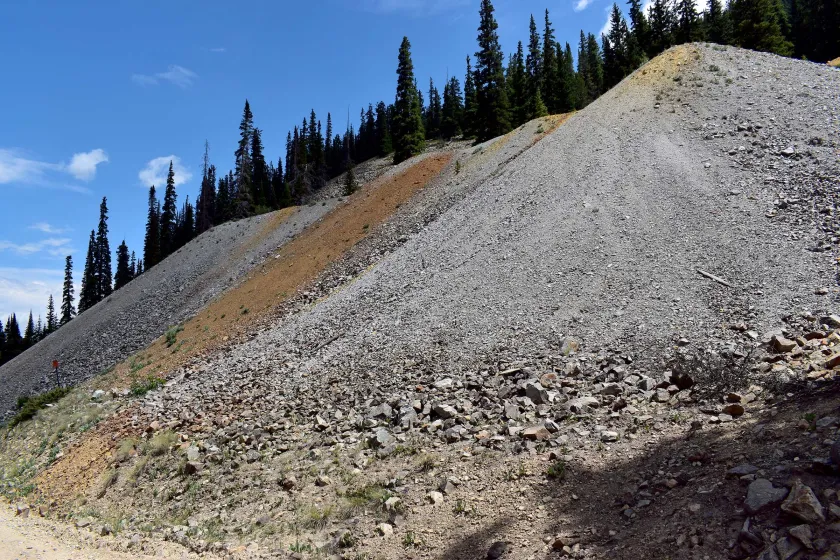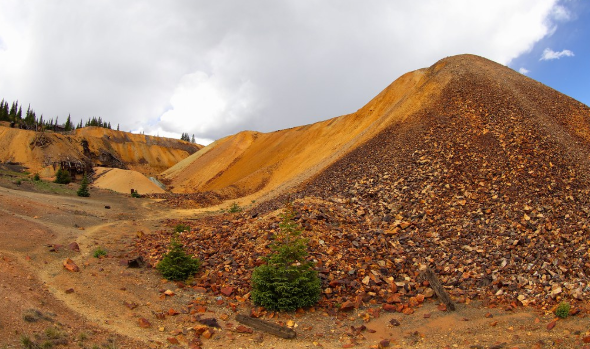Mining tailings are a critical issue in modern mining operations. Mining tailings refer to the waste materials left over after the extraction of valuable minerals.
Improper handling and management of these tailings can lead to severe environmental and operational risks.
What are mining tailings and how are they generated?
Mining tailings are the byproducts of mining operations. After minerals are extracted from ore, the leftover material consists of tailings.
These materials are often a mixture of water, chemicals, and ground-up rock. Mining tailings can vary in composition depending on the mineral being extracted and the method used.
In most cases, tailings are stored in large tailings dams or piles, which pose significant risks to the environment and local communities.
The generation of mining tailings occurs during the mineral extraction process, which typically involves crushing, grinding, and chemical treatment.
These activities leave behind large volumes of waste that need to be managed properly to prevent environmental contamination.
Main environmental and operational risks associated with mining tailings
Mining tailings present several environmental and operational challenges.
Improper disposal and management of tailings can lead to significant risks for local ecosystems, water resources, and human health.
The following are the key risks associated with mining tailings:
Contamination of water and soil
Mining tailings often contain hazardous materials, such as heavy metals and chemicals used in mineral processing.
When tailings are not properly contained, these toxins can leach into the surrounding water sources and soil.
This contamination can have devastating effects on local wildlife, agricultural activities, and human populations who depend on these resources for drinking water and food production.
The most common pollutants found in tailings include arsenic, mercury, lead, and cyanide.
These substances can remain in the environment for long periods, causing chronic contamination.
Structural failures of tailings dams
Tailings dams are structures designed to contain and store mining tailings. However, they are not immune to failure.
Tailings dam failures are one of the most catastrophic risks in mining operations.
Over the past few decades, there have been several high-profile dam failures, causing loss of life, environmental damage, and economic losses.
When tailings dams fail, large volumes of waste are released into the environment, leading to devastating consequences.
Flooding, soil erosion, and contamination of water bodies are just a few of the immediate effects.
The damage to local communities and ecosystems can take years, or even decades, to repair.
Impact on surrounding communities and ecosystems
Mining tailings can severely affect nearby communities.
The contamination of local water supplies and soil can lead to health problems such as skin diseases, respiratory issues, and cancers.
Furthermore, livelihoods that depend on agriculture, fishing, or tourism can be destroyed by polluted environments.
Ecosystems can also suffer irreparable damage due to tailings contamination.
The destruction of habitats and the poisoning of plants and animals can result in the loss of biodiversity, further compounding the environmental damage caused by mining.
Best practices for sustainable tailings management
To mitigate the risks associated with mining tailings, companies must adopt best practices for sustainable tailings management.
These practices focus on risk prevention, ensuring environmental protection, and complying with regulations.
The following methods are widely recognized as the most effective ways to manage mining tailings safely:
Monitoring systems and early warning technologies
One of the key ways to ensure the safety of mining tailings is through continuous monitoring systems.
Real-time data collection and analysis help companies track the stability of tailings dams and detect early warning signs of failure.
These systems can include sensor networks, remote monitoring, and geotechnical instruments that provide valuable information on water levels, dam integrity, and potential risks.
Early detection of problems such as increased pressure, seepage, or movement within the dam structure allows for timely interventions to prevent catastrophic failure.
The use of satellite imagery and drones is also gaining traction in monitoring tailings dams.
Dry stacking and alternative disposal methods
Dry stacking is an innovative technique for managing mining tailings.
Unlike traditional methods that rely on tailings dams, dry stacking involves dewatering the tailings to remove excess water, leaving behind a dry, compacted material.
This material is then stored in a controlled environment, which eliminates the risks associated with tailings dams.
Dry stacking is considered safer and more environmentally friendly because it reduces the chances of tailings escaping into the environment.
Additionally, it requires less water and prevents the creation of large, unstable piles of wet tailings.
Other alternative disposal methods include backfilling, where tailings are used to fill voids in mined-out areas, and paste tailings systems, which involve creating a slurry of tailings with a higher solid content for disposal.
Compliance with international standards and ESG principles
To ensure the long-term sustainability of mining operations, it is essential to comply with international standards and Environmental, Social, and Governance (ESG) principles.
Regulatory bodies such as the International Council on Mining and Metals (ICMM) and the World Bank have set guidelines for responsible tailings management.
These guidelines focus on transparency, accountability, and risk mitigation.
Adhering to ESG principles not only helps companies meet regulatory requirements but also improves their reputation and fosters trust with local communities and stakeholders.
Compliance with these standards can also reduce legal liabilities and prevent fines.

How True Mine helps companies manage mining tailings efficiently and safely
True Mine offers advanced solutions for managing mining tailings in a safe, sustainable, and compliant manner.
Their real-time monitoring systems and risk mitigation strategies help ensure the safety of tailings dams and reduce the environmental impact of mining activities.
By using True Mine’s innovative technology, mining companies can monitor the stability of tailings dams, detect potential risks early, and implement effective interventions to prevent failures.
Their solutions also enable mining operations to align with international environmental standards, ensuring that companies meet regulatory requirements and achieve ESG goals.
With True Mine, companies can transform their tailings management practices, making their mining operations safer, more efficient, and more environmentally friendly.
Ensure safe and compliant management of your mining tailings with True Mine. We offer real-time monitoring, risk mitigation strategies, and support in aligning your operation with international standards.
Contact us and transform your mining sustainability!



